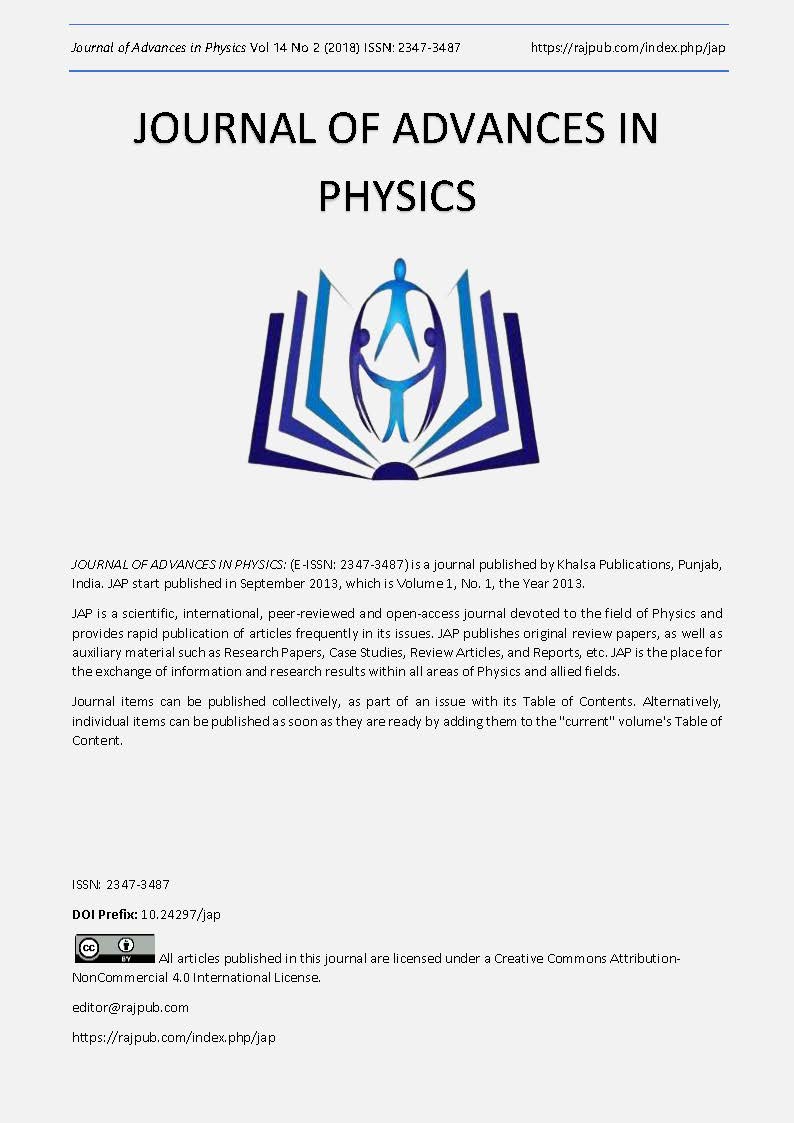ZnS/Cu2ZnSnS4/CdTe/In Thin Film Structure for Solar Cells
DOI:
https://doi.org/10.24297/jap.v14i2.7395Keywords:
solar cell, ZnS, Cu2ZnSnS4, CdTe, thin film, electrodepositionAbstract
A solar cell with glass/ITO/ZnS/Cu2ZnSnS4/CdTe/In structure has been fabricated using all-electrodeposited ZnS, Cu2ZnSnS4 and CdTe thin films. The three semiconductor layers were electrodeposited using a two-electrode system for process simplification. The incorporation of a wide bandgap amorphous ZnS as a buffer/window layer to form ITO/ZnS/Cu2ZnSnS4/CdTe/In solar cell resulted in the formation of this 3-layer device structure. This has yielded corresponding improvement in all the solar cell parameters resulting in a conversion efficiency >12% under AM1.5 illumination conditions at room temperature. These results demonstrate the advantages of the multi-layer device architecture over the conventional 2-layer structure.
Downloads
References
P.Babu, M.V. Reddy, N. K. Revathi, T.R. Reddy. Effect of pH on the physical properties of ZnIn2Se4
thin films grown by chemical bath deposition. Journal of Nano- and Electronic Physics, 3, P. 85–91
(2011).
E. Bacaksiz, S. Aksu, I. Polat, S. Yilmaz, M. Altunbas. The influence of substrate temperature on the morphology, optical and electrical properties of thermal evaporated ZnSe thin films. Journal of Alloys and Compounds, 487, P. 280–285 (2009).
A.S. Abdinov, M.A. Jafarov, N.M. Mekhtiev. Photosensitivity of the CdSSe films near the JR region Proc. of SPIE, 4340, P. 107–111 (2000).
A. Dumbrava. Zinc sulfide fine particles obtained at low temperature. Chalcogenide Letters, 6(9), P. 437–443 (2009).
J. Yang, G. Wang, H. Liu, X. Chen. Controlled synthesis and characterization of ZnSe nanostructures via a solvothermal approach in a mixed solution. Mater. Chem. Phys., 115, P. 204–208 (2009).
J.B. Chaudhari, N.G. Deshpande, Y.G. Gudage, A. Ghosh, V.B. Huse, R. Sharma. Studies on growth and characterization of ternary CdS1−xSex alloy thin films deposited by chemical bath deposition technique. Applied Surface Science, 254, P. 6810–6816 (2008).
A. Apolinar-Iribe, M.C. Acosta-Enriquez, M.A. Quevedo-Lopez, R. Ramirez-Bon, A. De-Leon, S.J. Castillo. Acetylacetone as complexing agent for CdS thin films grow chemical bath deposition. Chalcogenide Letters, 8, P. 77–82(2011).
L.Y. Chen, D.L. Zhang, G.M. Zhai, J.B. Zhang. Comparative study of ZnSe thin films deposited from modified chemical bath solutions with ammonia-containing and ammonia free precursors. Materials Chemistry and Physics. 120, P. 456–460 (2010).
T.P. Kumar, P.D. Ramesh, B.J. Abaraj. Effect of ethylenediamine tetraacetic acid concentration on the photoluminescence behavior of CdZnS thin films. Chalcogenide Letters, 8, P. 207–212 (2011).
Gopakumar, N.P. Anjana, P.P. Vidyadharan. Chemical bath deposition and characterization of CdSe thin films for optoelectronic applications. J. Materials Sci., 45, P. 6653–6656 (2010).
W.C. Song, J.H. Lee. Growth and characterization of ZnxCd1−xS films prepared by using chemical bath deposition for photovoltaic devices. Journal of the Korean Physical Society, 54, P. 1660–1665 (2009).
D. Patidar, K.S. Rathore, N.S. Saxena, T.P. Sharma. Determination of optical and electrical properties of ZnSe thin films. Journal of Modern Physics, 55, P. 3041–3047 (2008).
Downloads
Published
How to Cite
Issue
Section
License
 All articles published in Journal of Advances in Linguistics are licensed under a Creative Commons Attribution 4.0 International License.
All articles published in Journal of Advances in Linguistics are licensed under a Creative Commons Attribution 4.0 International License.




